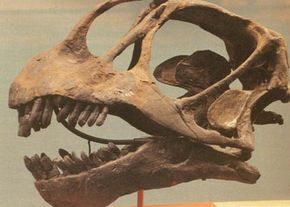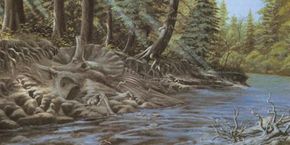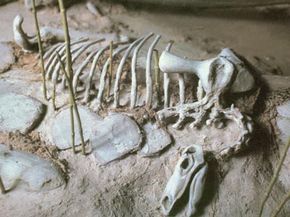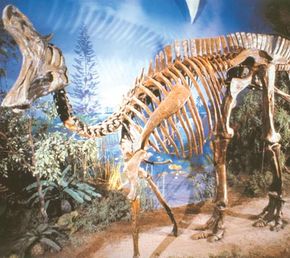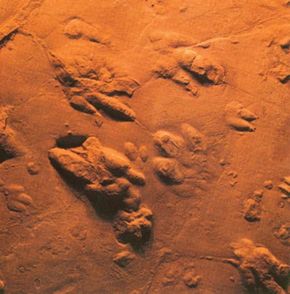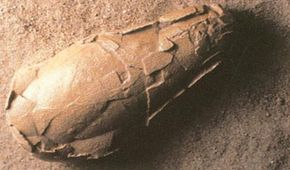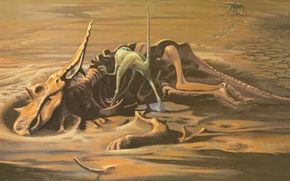Dinosaurs are known for the special skeletal structures they evolved. These include the horns and frills of the ceratopsians; the sailbacks of certain iguanodontids and theropods; the domed skulls of the pachycephalosaurians; the cranial crests of the hadrosaurs and certain theropods; and the plates and spines of the stegosaurians and ankylosaurians. These special skeletal structures would have been bold and obvious, so these structures may have been for display. Many also had other uses, including regulation of body heat, making noise, and defense.
Sight was an important sense to dinosaurs; their eyes were large. Dinosaurs were closely related to birds and crocodiles; both see colors and have a wide range of visual signals. So, these special skeletal structures of dinosaurs may have been brightly colored or boldly patterned. Closely related but different species may have been differently colored so they could be told apart during mating season.
Some of these structures, such as stegosaurian plates and ceratopsian frills, were made of thin bone that had many passages for blood vessels. Blood must have run through these passages, either to cool the animal off (if the dinosaur were warm-blooded) or to warm it up (if the dinosaur were cold-blooded). By regulating the blood flow to these structures, a dinosaur could regulate heat loss or heat gain and maintain a reasonably constant body temperature. The dinosaur may also have been able to change the structure's color by changing the blood flow. This would have given dinosaurs a way of expressing their emotional state to others of their kind.
Birds and crocodiles have excellent hearing, and their relatives the dinosaurs probably did, too. Some dinosaur skulls have the delicate bony structures of their middle and inner ears preserved. By examining these, scientists can confirm that most dinosaur groups could hear very well. Since that is true, they may have been able to vocalize. The head crests of the lambeosaurines were part of their nasal passages. An animal inhaled air into its crest, which then went down through the back of its head into the lungs. This was a very complicated pathway, but it may have been used for making sounds. The lambeosaurine could have inhaled air and vibrated its looping nasal passage, emitting a deep, low-frequency call. As far as we know, no two lambeosaurines had exactly the same crest shape, so no two would have made the same call. Their crests may have vocally distinguished individuals from one another.
The function of the horns of ceratopsids seems obvious: To fight an attacking tyrannosaurid. Also, rival ceratopsids probably locked horns in shoving matches over mates. Today's moose and elk use their antlers like this and fight predators by using their sharp-hoofed feet, not their antlers. Ceratopsids could also have used their sharp beaks to inflict painful, sometimes fatal wounds on predators.
It is difficult to understand that the world was a far different place 65 to 240 million years ago and that it was populated by huge and strange-looking creatures. All the large animals in today's zoos, from elephants to zebras to kangaroos (except crocodiles), evolved well after dinosaurs were gone. We are fortunate that some of the dinosaurs left their traces in rocks, which scientists have been able to study and compare with living animals. Scientists can then make educated assumptions about dinosaur lifestyles. In a world with a history that spans four and a half billion years, perhaps the most interesting thing about dinosaurs is that we have been able to learn anything about them at all.
